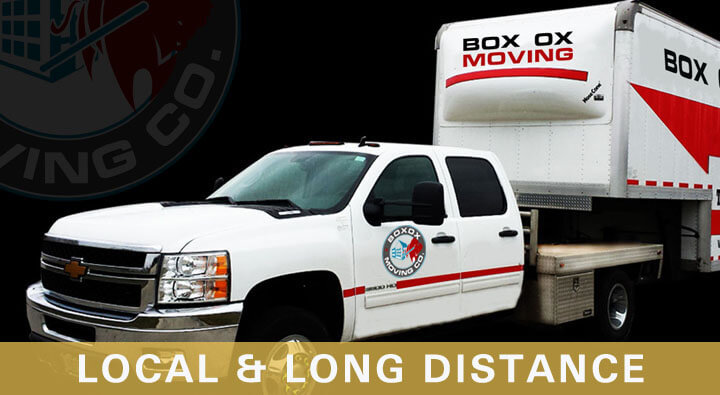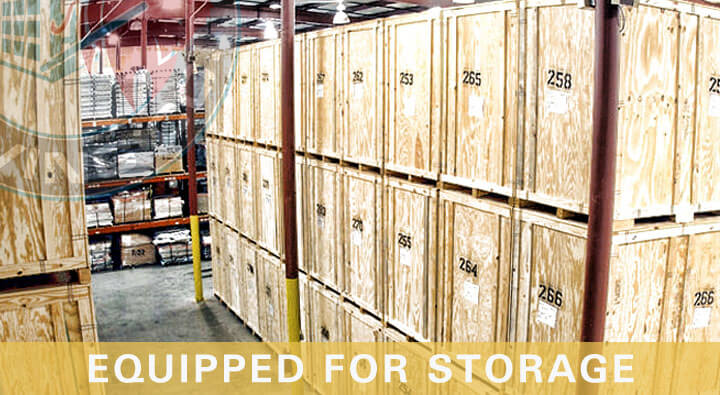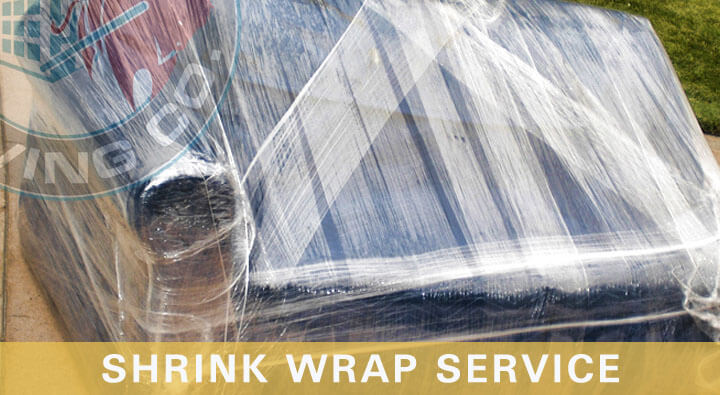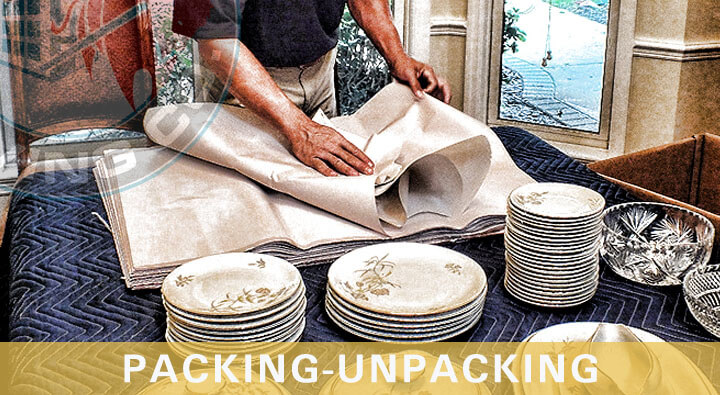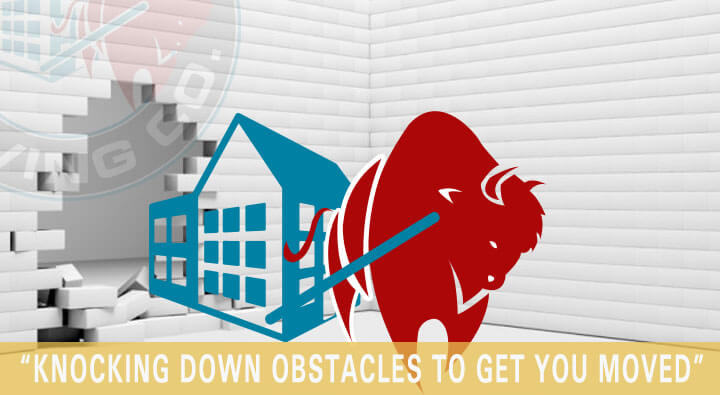Loading Tips
A self-move is a great way to save money moving, without the stress of driving a rental truck across the country. You load it. Box Ox Moving drives it to your new location. You unload it. It's as simple as that.
But before you start carrying boxes up the ramp or into the rental truck, there are a few things you'll need to know to make sure your belongings travel to your destination safely and securely.
Free printable loading tips sheet here
Supplies You Need
- Moving Blankets and/or Paper Padding
- Small Stretch Wrap and Large Stretch Wrap
- Mattress and Furniture Covers
- Packing Tape
- Tarp or plastic sheeting
- Moving Straps
- Rope, ratchet straps, bungee cords, or other types of tie-downs
- Work Gloves
- Step-stool or smaller ladder
- "Filler" items (e.g. pillows, stuffed animals, clothes, linens, etc. in bags
Preparing To Load
You'll find that pre-planning how you'll load reduces loading time and fatigue. And, just as important, it ensures your belongings travel safer.
- Place everything you can inside similar-size moving-grade boxes (rather than "grocery store" boxes or plastic totes). Moving boxes were designed for easy "squaring-off," which helps maintain the integrity of the load as items are stacked on top.
- Make sure all boxes are labeled with their contents and destination room location.
- Wrap all unboxed items in paper padding, plastic stretch wrap or furniture pads.
- Wrap upholstered furniture with self-adhering plastic wrap, paper padding or furniture pads to protect from soil and punctures.
- Wrap wood or metal furniture with moving pads or paper padding. Pay special attention to corners and legs.
- Wrap mirrors, large framed pictures and marble table tops in plenty of paper padding or furniture pads.
- Use plastic wrap or packing tape to secure moving pads or paper padding to furniture (making sure not to place tape directly on furniture).
- Be generous with padding to avoid scratches, gouges, and broken items.
- Disassemble furniture such as kitchen tables, entertainment centers, bed frames, headboards, footboards, and dresser mirrors.
- Keep in mind that furniture made of particle board is more susceptible to damage when shipped assembled. It is not built to withstand the normal stresses that occur when traveling in a moving truck (which is why manufacturers ship disassembled). While it is safer to move this type of furniture disassembled, it can be less sturdy after being taken apart and reassembled.
- Wrap bed rails or disassembled table legs and roll them into large rugs or carpets.
- Remove shelves from bookcases, armoires, etc., and wrap them separately (if removable).
- Remove hardware, screws, parts, etc., from furniture, place them in a sealable bag and tape to the back of furniture or inside a drawer.
- Prior to moving day, measure doorways to determine the best door to move large furniture out of.
- Remove all food from refrigerators/freezers.
- Defrost refrigerators/freezers 24-48 hours prior to loading.
- Hang a bag of charcoal or coffee beans/grounds inside refrigerator/freezer to prevent "musty" odors.
- Disconnect water/ice-maker lines and tape the cord to the back of the refrigerator/freezer.
- Avoid tipping your refrigerator/freezer on its side as this can cause damage to the compressor.
- Drain all water out of washing machines 24 hours prior to loading. Avoid doing a load of laundry the day of the move.
- Tip the washing machine backward to drain as much water as possible.
- Place hoses from washer or dryer in a plastic bag and put them inside the unit.
- Pack trays/glass shelves from microwaves and refrigerators inside a moving box.
Loading Your Items
- Make sure you have an obstacle-free route from the door to the moving trailer/truck.
- Lay a tarp or plastic wrap on the floor of the trailer to protect against dust/dirt.
- Designate one or two people to remain on the truck while the others are carrying items. They will be responsible for stacking and loading everything tightly.
- Begin by loading into the front of the truck (near the cab) and work your way toward the back.
- Stack items from floor to ceiling, putting heavy items on the bottom and lighter items on the top.
- Create 2' – 3' tiers as you are loading. Each tier should be close to the top of the trailer/ReloCube ceiling before beginning the next tier.
- "Square" the load by creating a flat surface with boxes. This makes each level easier to stack.
- Pack items tight, like a jigsaw puzzle – all space should be filled to avoid shifting in transit. Use "fillers" for any open space.
- Tie each tier off with ratchet straps/rope, etc. to secure.
- Load the largest, heaviest furniture and appliances first (against the walls to help distribute the weight evenly throughout the truck). The sofa/loveseat should be placed on end if possible. If the legs are not removable, point them toward the wall and pack "fillers" in the space between the wall and the sofa/loveseat (don't forget to wrap each item).
- Remove cushions from the couch and wrap or place in plastic bags.
- Place wrapped pictures and mirrors upright between mattresses.
- Place wrapped headboards and footboards between mattresses (not the same mattress your pictures/mirrors are between).
- Remove drawers and contents of drawers before moving desks, cabinets or dressers. Once the items are loaded on to the truck, replace the drawers and secure with self-adhesive plastic wrap.
- Make sure items that could potentially cause damage are not loaded against fabric or wood furniture. For example, a piece with protruding metal could puncture a sofa or mattress.
- Avoid loading thin-legged tables on bottom; they may not be able to handle the weight of items loaded on top.
- Avoid loading the feet of an item directly on top of a finished piece of furniture; this could dent or puncture the finish.
- Avoid loading furniture against other furniture or truck walls without proper padding (furniture pads, paper pads, cardboard, etc.).
- Load the heaviest and largest boxes first. Place them on top of appliances and furniture and fill any cavities beneath tables, desks and chair seats.
- Stack lighter boxes on top of heaver boxes.
- Place fragile items or awkward shaped items on last and secure tightly (make sure they're marked "fragile").
- Place light-weight loose items like plastic plants, small rolled up rugs, bundled mops and brooms, etc. on top.
- Rolled up rugs, bags of linens, etc., can be used to help fill void areas.
- Keep gas operated items like lawn mowers, weed eaters, etc., on the truck floor, covered with tarp or plastic sheeting and away from fabric items (after you drain flammable fluids).
- When moving motorcycles, riding lawn mowers or small ATVs use strong ratchet straps to secure the items and ensure they stay in place during transit. If moving in a trailer, we recommend nailing wooden blocks into the trailer floor for added bracing. All fuel must be completely drained.
- Use ratchet straps/rope/cord, etc., throughout the process to keep items safe in secure. While strapping it all in at the end is important, it's just as important to secure the items as you load.• Make sure you have an obstacle-free route from the door to the moving trailer/truck.
Protecting Yourself While You're Loading
While there are certainly things you can do to ensure your belongings travel safely to your new home, you'll also want to ensure an injury-free moving day. Share the tips below with anyone planning to help with loading or unloading your shipment.
- Have someone available to help lift heavy items. Don't overdo it. If you have to strain to carry the load, it's too heavy.
- If you need assistance with loading or unloading, give us a call; we can help!
- If you have heavy items, consider using a dolly.
- Avoid wearing clothing that may get snagged while carrying furniture out of doorways and into the moving truck.
- Wear leather gloves when handling large, heavy objects with sharp edges (you'll need these for installing the trailer ramp and bulkhead, too.
- Wear durable, supportive footwear with a good grip (avoid sandals or open-toed shoes).
- Pace yourself. If you have a lot to move, take small breaks throughout the process.
- Make sure you can see where you're walking.
- Avoid walking on slippery, uneven surfaces.
- Bend your knees – not from your waist – when picking up and setting down objects.
- Always lift with your legs and not with your back.
- Keep your back as straight and vertical as possible – don't arch your back or reach out for an object.
- Get a firm footing before picking up a heavy object (parting your feet and putting one foot slightly in front of the other helps give you good balance).
- When lifting, stand close to the item with your feet shoulder-width apart, elbows tucked in, and chin down.
- Use slow and smooth movements.
- Keep your body facing the object while you lift it – avoid twisting.
- Try to carry the object in the space between your shoulder and waist; this puts less strain on your back.
- When using a dolly, make sure the blades are centered and completely under the load.
- Always walk with the dolly in front of you and keep the load balanced, with heavier items on the bottom.
- Avoid loading items onto the dolly higher than chest-level.
- When going up or down the ramp or steps, have a second person help support the item.
Of course, there are some items that moving companies are simply unable to ship. For a list of items that cannot be shipped inside a moving trailer or moving truck, please see Box Ox Moving's Do-Not-Ship List.
More Helpful Moving Advice
Much of the information you’ve read here can also be found on the Box Ox Moving Blog – which offers an abundance of detailed posts containing very specific moving advice. You can also send us a message below:

